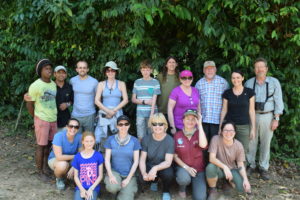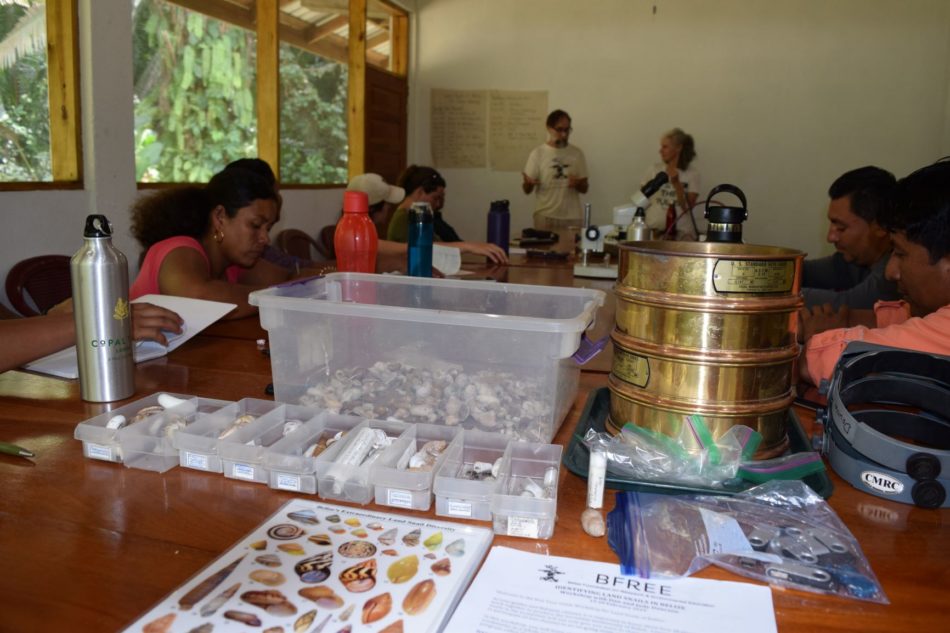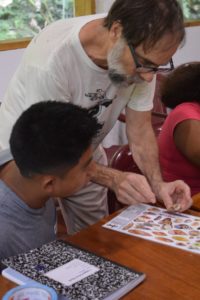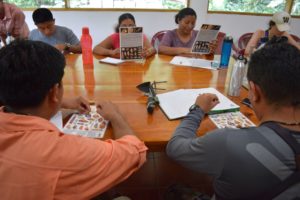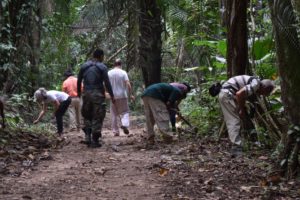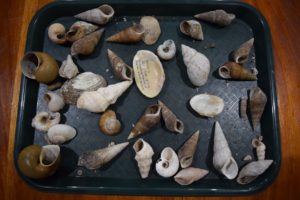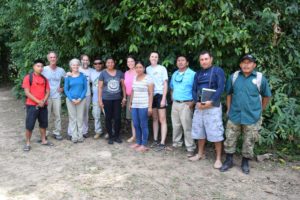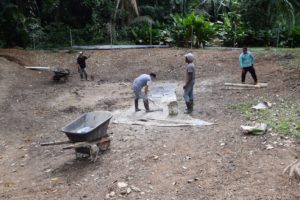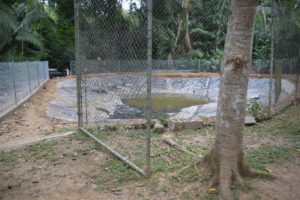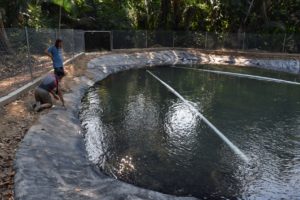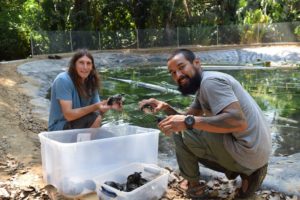Spring ’19 Hicatee Health Assessments
/0 Comments/in Blog, Eco-Tourism, Research, Turtle Conservation /by Tyler SanvilleDuring the early March Hicatee Health Assessment, a total of 214 turtles were assessed at the Hicatee conservation and Research Center (HCRC). The primary purpose of the spring health assessment was to perform a basic exam of the overall health of the captive population at the HCRC. Because oviposition takes place between the months of November and February, it was also relevant to check for the presence of additional eggs.
Prior to the Health Assessments beginning, a small team of volunteers arrived to help prepare the site. The team cleaned hatchling tanks and moved the 140 hatchlings from the 2018 cohort from the soft release cage where they had been housed since December. They were placed there during the coldest months of the year because the water in Pond A maintained higher temperatures than in the smaller, above-ground tanks where they live during warmer months. Hatchlings were counted and given a quick check before being transferred back to the tanks where they acclimated until their assessments a few days later.
The three day processing started off with adult turtles being netted from the pond A, then placed in their respective holding area awaiting assessment. On day two, Adult turtles from Pond B was then netted and assessed. Day 3 commenced with a scanning of both pond perimeters for nest cavities which showed signs of eggs. Followed by the assessment of hatchlings from the 2018 cohort. Results from this year’s spring health check are still under analysis.
Cayle Pearson and Sarah Cristoff of Jacksonville Zoo and Gardens isolated several adult male turtles to collect additional data that will help them troubleshoot issues relating to the Hicatee turtles held in captivity at their facility.
We were grateful to receive support and assistance from the following participants in our spring health check: Dr. Isabelle Paquet Durand, Veterinarian at Belize Wildlife and Referral Clinic, Cayle Pearson, Supervisor of Herpetology, Jacksonville Zoo and Gardens, and Sarah Cristoff, Veterinary Technician, Jacksonville Zoo and Gardens, Heather Alford, Missy Belmer, Laurie Haven, Doris Dimmitt, Rodney Dimmitt, Tim Gregory, and Emily Gregory. We would like to express our gratitude to Jacksonville Zoo and Gardens for their financial support for this spring’s Hicatee health assessment.
The Hicatee Conservation & Research Center is a joint protect between BFREE and Turtle Survival Alliance. The bi-annual Assessments help ensure the health of captive animals at the HCRC and also contribute to our ongoing research of these critically endangered turtles. #savethehicatee
Land Snail Workshop at BFREE
/0 Comments/in Blog, Education, Non-Proft /by Tyler SanvilleThe first workshop on the Land Snails of Belize was led by biologists, Dan and Judy Dourson, and took place at the BFREE field station in late February. The workshop’s goal was to give participants an understanding of which snails can be found in southern Belize and to train them to identify land snails with the help of the materials that the Dourson’s created. These materials include the newly published book “Land Snails of Belize: A Remarkable Chronicle of Diversity and Function” and the associated Field Identification card.
The course was designed for tour guides and educators and therefore focused on the importance of land snails in the environment, described why they matter in Belize, and also provided great examples of how to use snails in short lessons. During this hands-on workshop, the group searched for, collected, and learned to identify and sort snails.
Participants included NGO representatives, tour guides and interested members of the public. These included: Morgan Lucot, Sipriano Canti, Christian Bech, Jaren Serano, Marten Ack, Andres Chen, Rousana Romero, Marleni Coy Emillian, Joaquin Obando, Andrew Choco, and Leanne Knox.
Special thanks to Leanne Knox for providing transportation to the BFREE Field Station for workshop participants.
Due to the interest in this course, BFREE and the Dourson’s plan to partner to create future workshops on Belize’s lesser known creatures in coming years. Stay tuned!
“Land Snails of Belize: A Remarkable Chronicle of Diversity and Function,” is available on Amazon. Don’t forget to use Amazon Smile to support BFREE while shopping online. The associated Land Snail Field Identification Cards are available for sale at the Belize Zoo and the BFREE field station.
New Rearing Pond at the Hicatee Conservation & Research Center
/0 Comments/in Blog, Conservation, Turtle Conservation /by Tyler SanvilleDesigned to study the reproductive biology and to determine if the Central American River turtle could be bred in captivity, the Hicatee Conservation & Research Center opened in 2014 and was met with immediate success when, in the summer of 2015, the first seven hatchlings emerged. This was followed by five hatchlings in 2016, 84 hatchlings in 2017, and 179 in 2018.
The HCRC originally included two large breeding ponds, an overflow pond and several rearing tanks. The small rearing tanks at the center quickly reached capacity and HCRC staff identified an urgent need to provide the necessary space and improved environment for the 2018 hatchlings and the soon to arrive 2019 cohort. After much discussion, it was determined that converting the overflow pond into a large rearing pond for hatchlings and juveniles was the most cost effective and quickest solution to housing all the expected hatchlings now and in the foreseeable future.
We secured funding from Oklahoma City’s Zoo’s Care Grant Program and from Zoo New England to begin pond modifications. Additional support was provided through funding for supplies offered by Jacksonville Zoo and Gardens in 2018 and the purchase of a very important piece of machinery was made possible thanks to proceeds from the Turtle Survival Alliance’s 2018 fundraising auction.
Pond modification was slow to get underway due a very wet rainy season. However, during February and March construction took place and 140 turtles were placed in their new home in April. The rearing pond (Pond C) is forty-feet in diameter and approximately six-feet deep at the center. A six-foot perimeter fence will encircle the pond and fresh water is provided by solar powered pumps which were already in place at the facility. We will modify Pond C in the coming months to include a floating island and the planting of food trees and grasses as has been done in Ponds A and B. Our hope is that the facility will offer a healthy environment for all hatchlings produced at the HCRC until they are ready for release into the wild.
Thanks to the Turtle Survival Alliance for their continued partnership on the Hicatee Conservation and Research Center. Thanks also to project sponsors: Oklahoma City Zoo, Zoo New England and Jacksonville Zoo and Gardens.
Birds, Chocolate, Forests, and Allegheny College
/0 Comments/in Argoforestry, Bird Conservation, Bladen Nature Reserve, Blog, Cacao, Chocolate, Conservation, Education, Educator, Field Course, Non-Proft, Student /by Darrell Robinson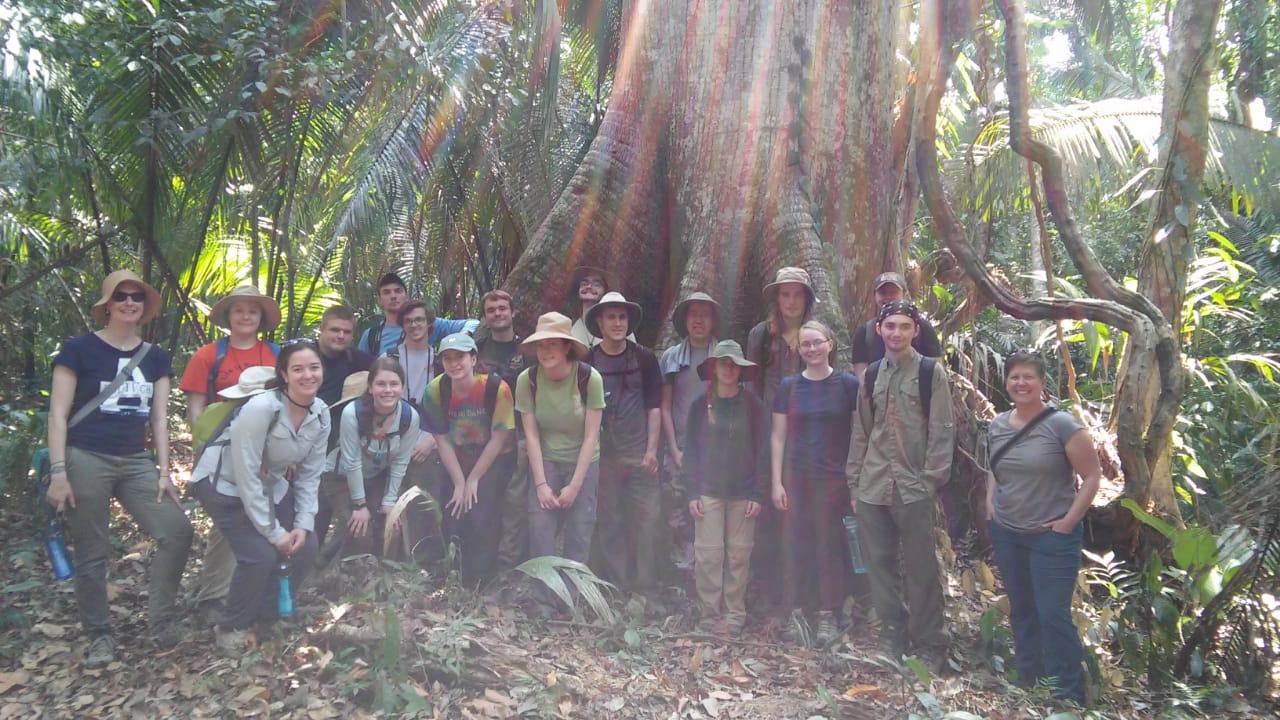
Allegheny College students pose for a photo at BFREE during the Birds, Chocolate, Forest Field Course in May 2019.
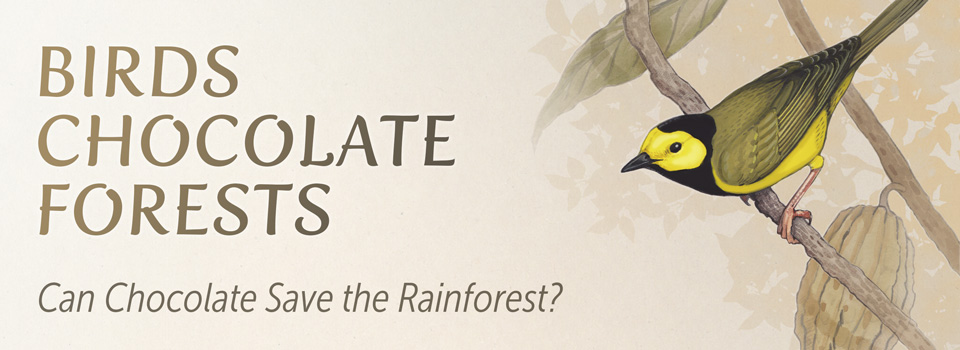
Written By, Beth Choate, Ph.D.
Associate Professor, Environmental Science and Sustainability
Allegheny College
BFREE’s Birds, Chocolate and Forests course provided students with a real life example of the complexities of conservation within the rainforests of southern Belize. Through interactive demonstrations and presentations, field research and experiments, day-excursions, conversations with all members of the BFREE team, and exploring the surrounding environment, students developed an understanding of the relationships not only between birds, chocolate, and forests, but people as well. The complicated web of relationships that exists among efforts to conserve biodiversity and livelihoods is something we speak often about in our Environmental Science and Sustainability courses at Allegheny College. In our introductory course for the major, we make it clear to students that you will not find the solutions to environmental problems in a book. Each problem is unique and requires individuals who can critically examine the issue to devise a unique and thoughtful solution. The 2-week experience with our BFREE guides was a perfect compliment to this concept. In a country where people rely on the natural resources of the surrounding forests to provide them with medicines, food, and fertile land for agriculture, it quickly became clear that you couldn’t simply tell people to stop using the forest. BFREE provides a unique solution: conserve the forest and grow a cash crop within the understory in an effort to conserve birds and other organisms, as well as livelihood. Jacob spoke with us about ongoing efforts to ensure that methods of cacao agro-forestry were fully understood so that local farmers could create successful farms and provide for their families demonstrating that BFREE is thinking about the sustainability of their program. The complexities of conservation also became apparent when learning about the Hicatee turtle, talking with Ernesto about traditional Mayan culture, and spending time on the coast in Placencia. This course was the perfect compliment to what we are saying in the classroom:
solving environmental problems is complicated.
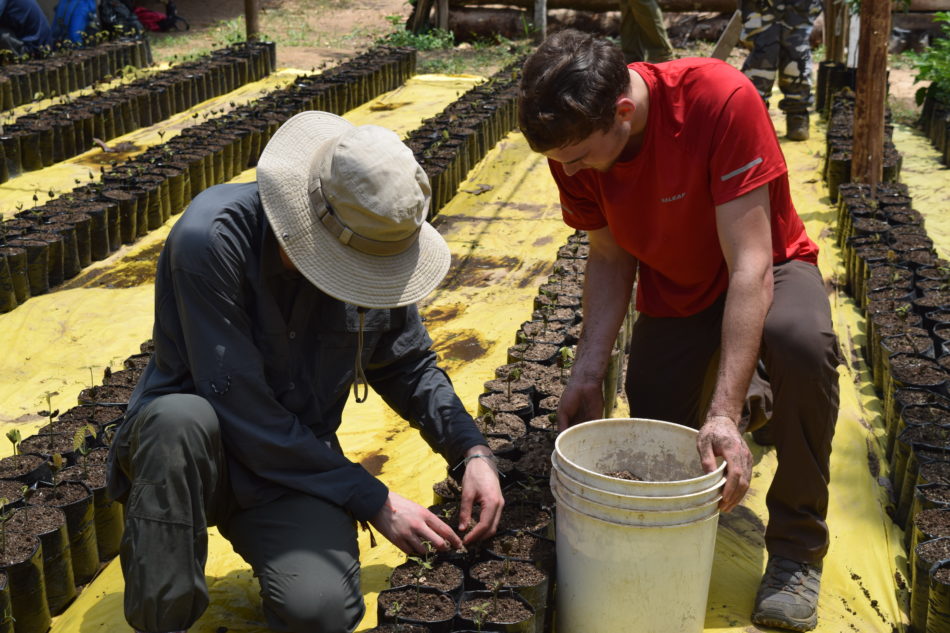
In order to solve those complicated problems, one must be curious, flexible, and have excellent communication and intercultural skills. Many of our students had minimal experience traveling outside of the US and very few had been submerged in a culture different to their own. When students are outside of their comfort zone, they are forced to adapt and push their own limits. It is through experiencing this unknown, whether it be using compost toilets, learning to fall asleep to the sound of howler monkeys, or discovering just how difficult harvesting cacao in the jungle can be, students were forced to overcome new challenges. After reading their final journal entries, many of our students surprised themselves. They learned that they are capable of much more than they ever thought possible. Through conversations with the BFREE staff and local Belizeans we met during the trip, worldviews were expanded and communication skills improved. For many students, this was the highlight of the trip, getting to know individuals with completely different life experiences than themselves. From an educational perspective, this is impossible to teach in a classroom or while simply touring around. BFREE provided an excellent experience for students to be completely submerged in the Belize culture, all while learning in a completely new environment.
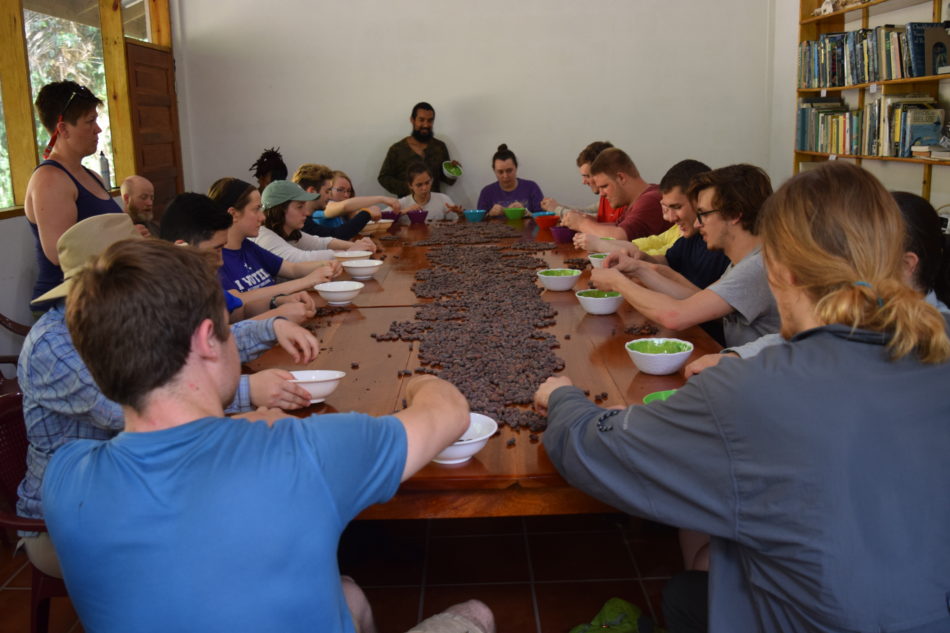
Herp Survey at BFREE
/0 Comments/in Blog, Conservation, Education, Hicatee Turtles, Research, Turtle Conservation /by Darrell Robinson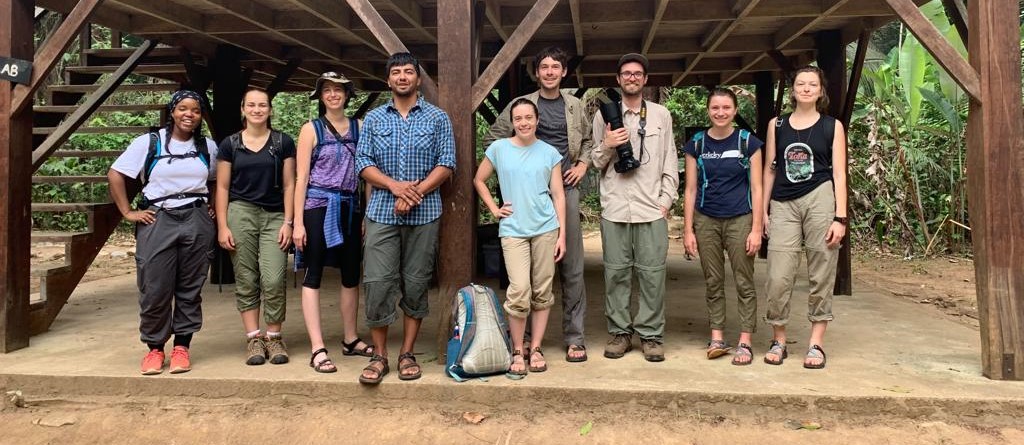
Article by, Iris Holmes
This May, a group of researchers from the University of Michigan and the University of California, Berkeley, visited BFREE to do a survey of amphibians and reptiles. They worked for two weeks, both on the BFREE property and at Mountain Pine Ridge Forest Reserve. Between these places, they recorded 47 species. Two of those finds (one snake and one frog) were significant range extensions within Belize.
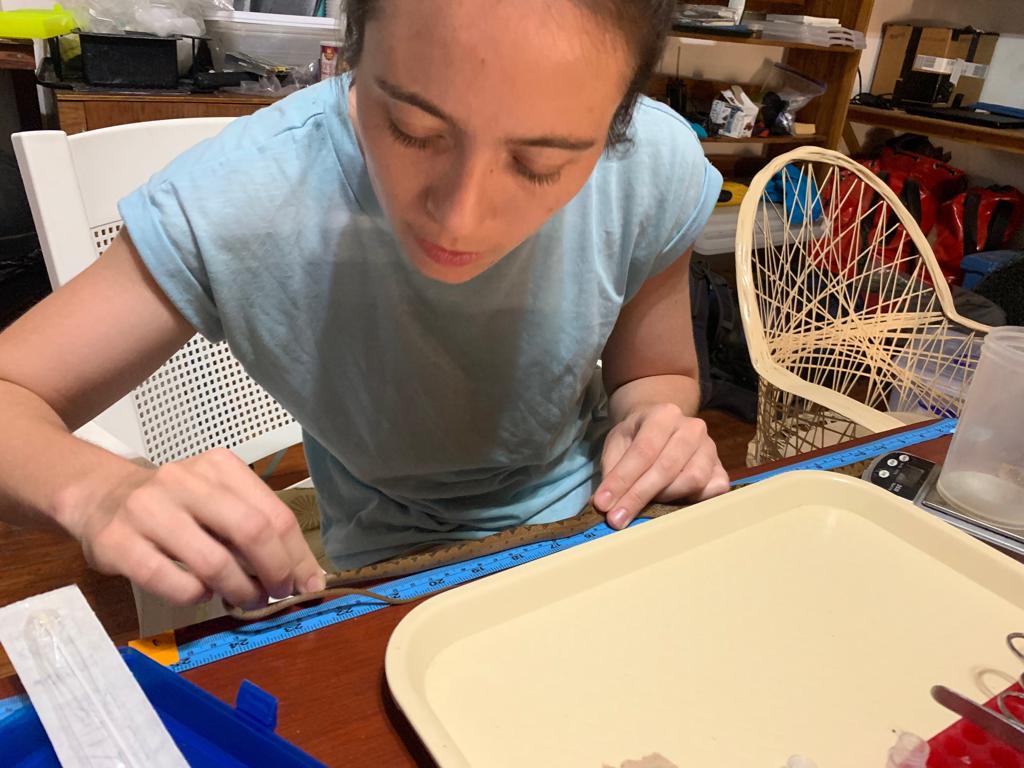
In addition to a biodiversity survey, the researchers collected a variety of data on each animal. They recorded snake anti-predator displays and took high-quality photos to study snake and lizard anti-predator and social color displays. One project focused on how frogs fluoresce in the UV spectrum and found new accounts of biofluorescence in several species.
The researchers also took microbiome samples from frog skin and snake and lizard digestive tracts. These samples will be used to understand the parasites that infect these species, and the bacteria that might help protect their hosts against these parasites. Other researchers worked to test hypotheses the diets of snakes, lizards, and frogs. Understanding what animals eat is key to conserving them – animals can’t survive if they can’t get enough food! The team was happy to find such diversity and abundance in the amphibians and reptiles of Belize. It was a particularly special experience to be at BFREE as the hicatee turtles were hatching. Watching animals emerge with the first rains of the wet season was a true privilege.
2019 Field Season Wrap Up
/0 Comments/in Bird Conservation, Blog, Conservation, Eco-Tourism, Education, Educator, Field Course, Student /by Tyler SanvilleWe are wrapping up another incredibly rewarding year of hosting field courses at the BFREE Field Station. 2019 brought seven colleges and universities from the US and one from Belize. Altogether, just over 100 students and 20 instructors spent between 4-10 nights at BFREE. They could be found immersing themselves in the jungle hiking both day and night, working on independent research projects, learning about the critically endangered hicatee turtle, tasting cacao fresh off the pod, swimming in the river, snacking on johnny cakes, and searching for the elusive Harpy eagle.
Most field courses require students to work on independent research projects in order to receive an introduction to environmental field methods through hands-on learning. Students gain a basic understanding of field methods necessary to discuss and research various environmental issues. Some will come prepared with a question in mind before they arrive at BFREE, however, for many once they arrive with one sweeping view of the jungle, the possibilities of research are endless. Below are just a few examples of the independent research projects students worked on this year.
- 1. Are howler monkeys most active at dusk or at dawn?
- 2. Does the height of the tree determine the size of its buttress?
- 3. Will the trees near the river or a waterbody grow taller than the ones that are not near a waterbody?
- 4. Will a foreign liquid throw the leafcutter ants off their trail?
- 5. Does the higher density of insects/food source in an area coincide with a higher density of birds in that area?
A special thanks to each of our instructors that make our Faculty-Led Field Courses a success. We look forward to having you back next time!
2019 BFREE Field Course Group Photos
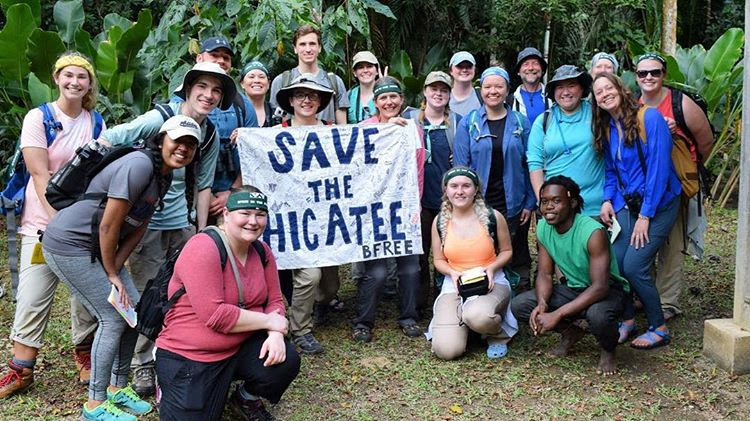
The University of North Carolina Wilmington, Wilmington, N.C.

The University of Massachusetts at Amherst, Amherst, MA
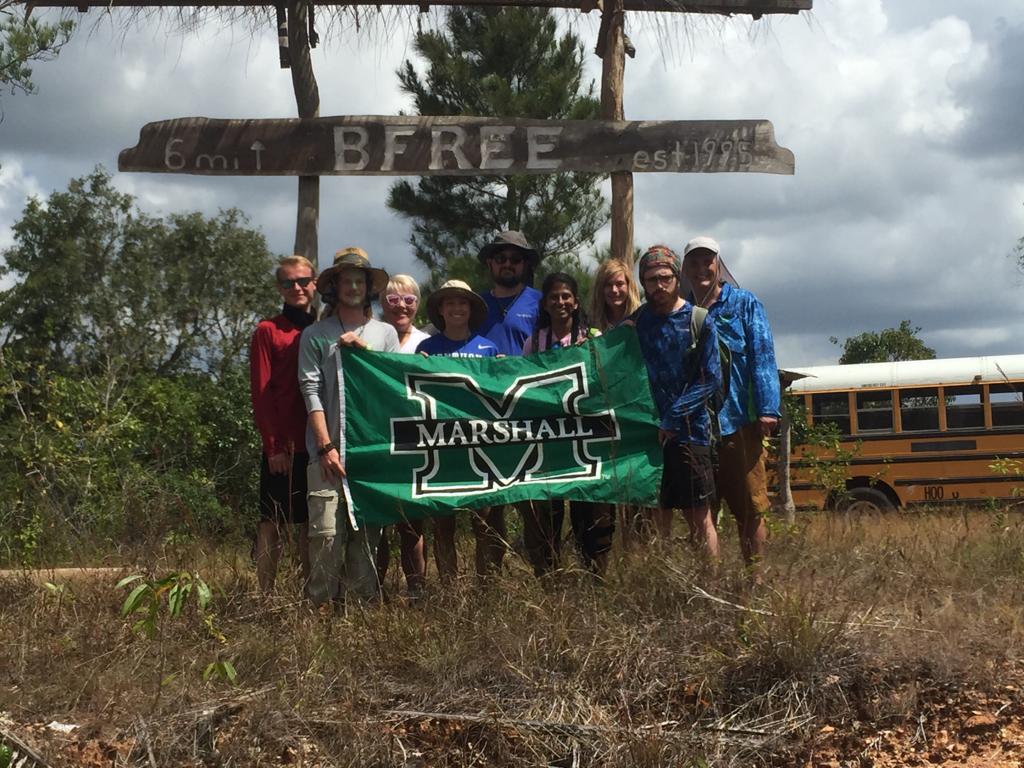
Marshall University, Huntington, West Virginia
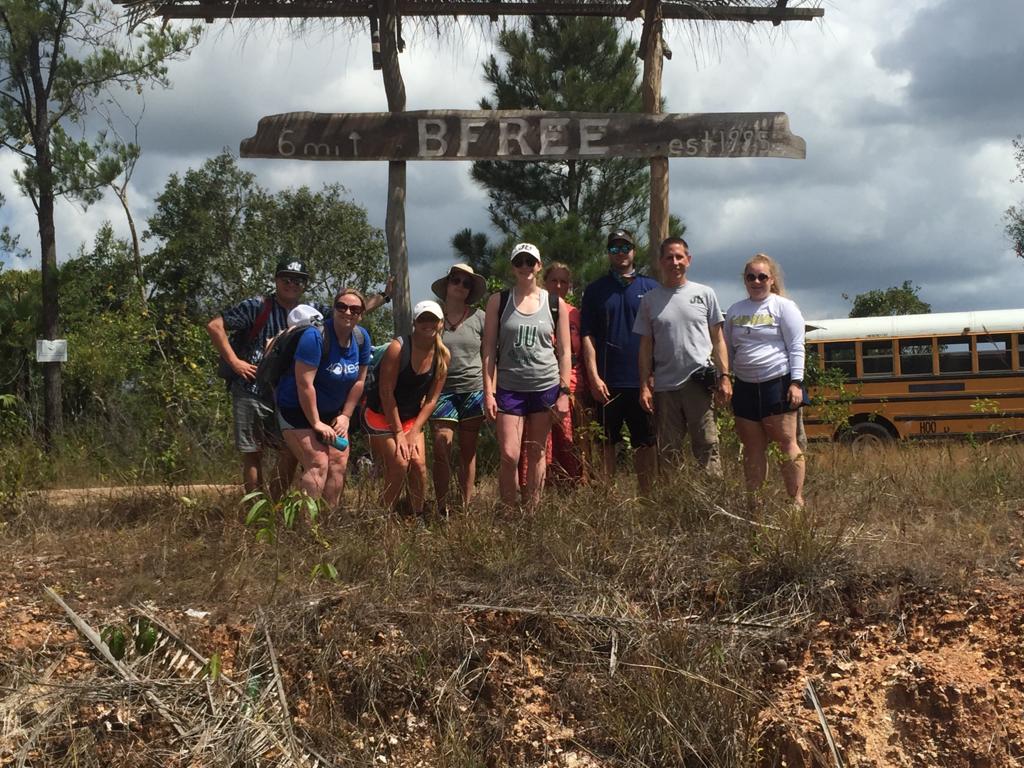
Jacksonville University, Jacksonville, FL
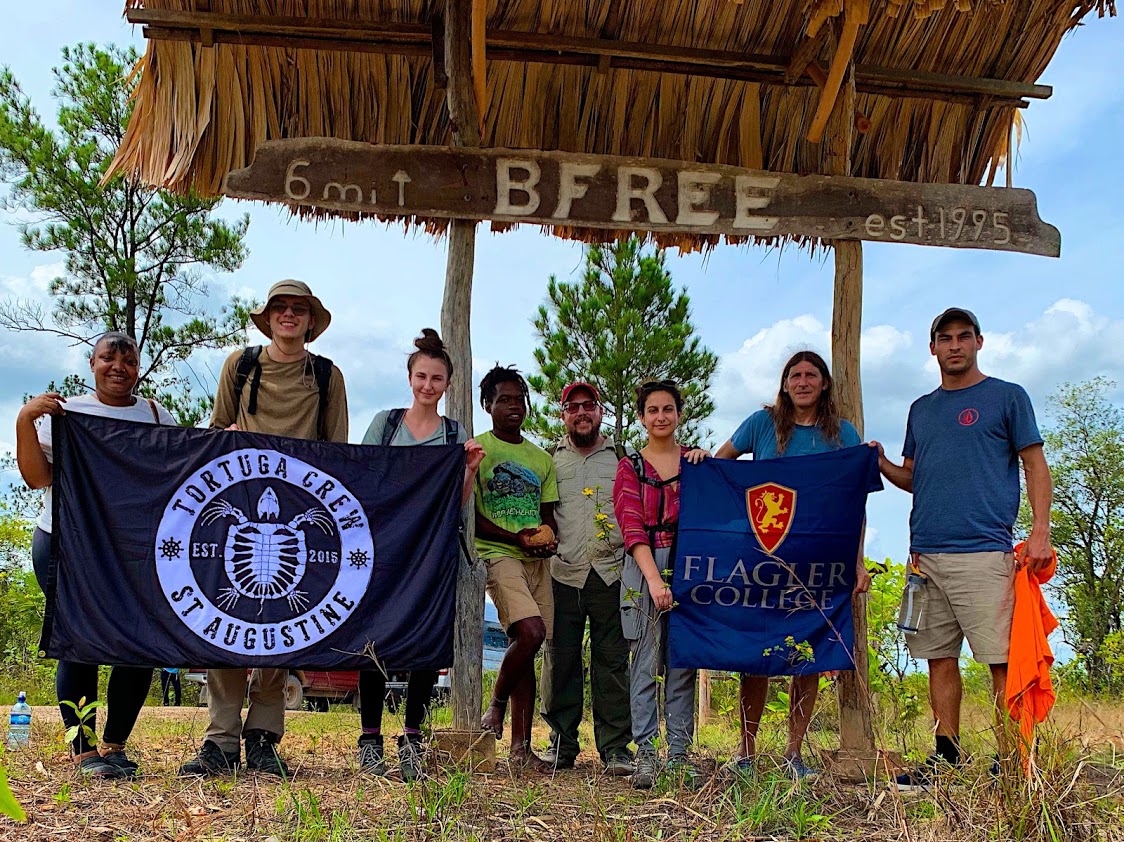
Flagler College, St Augustine, FL
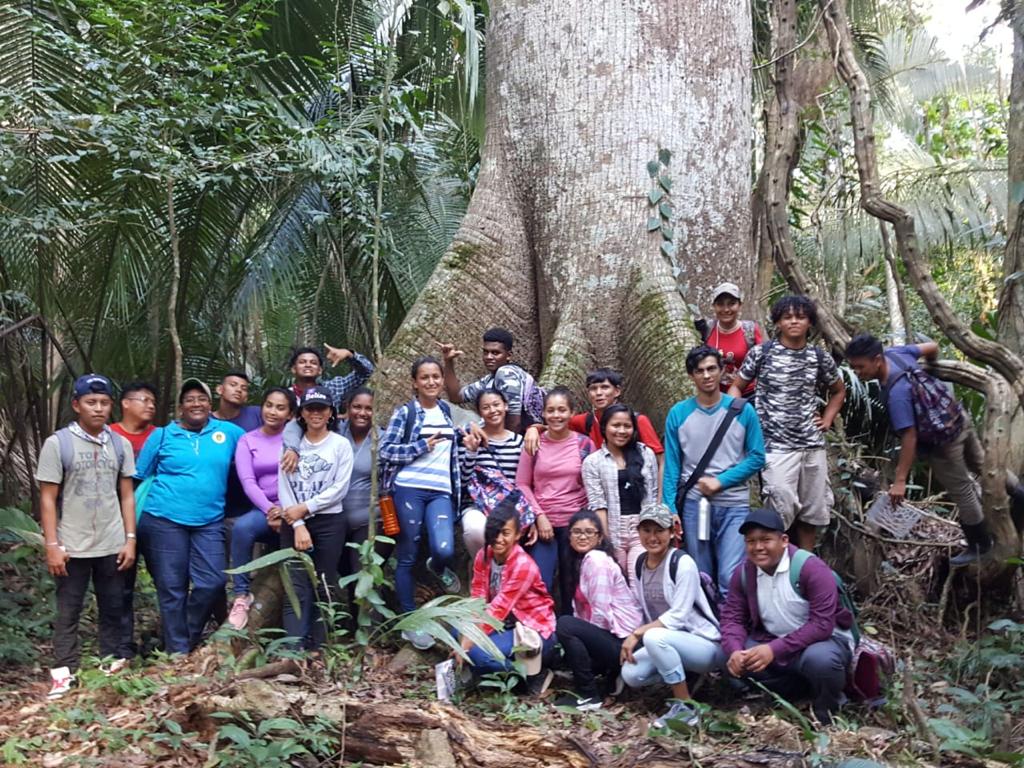
Independence Junior College, Independence, Belize
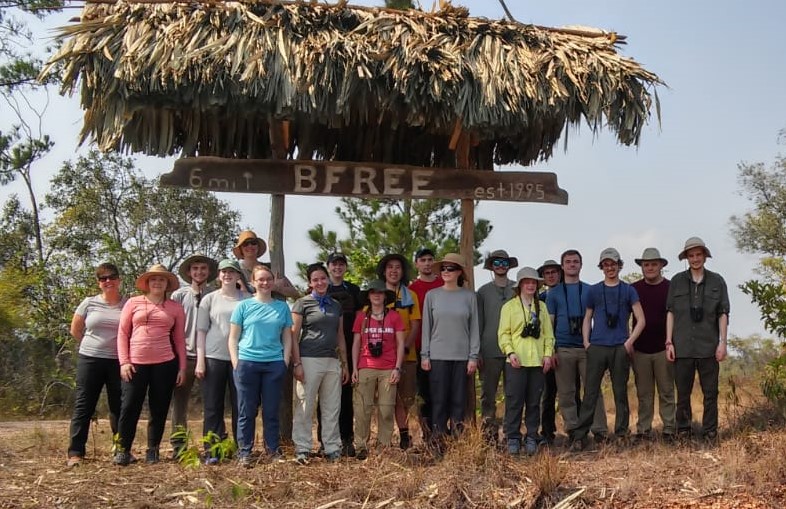
Allegheny College, Meadville, PA
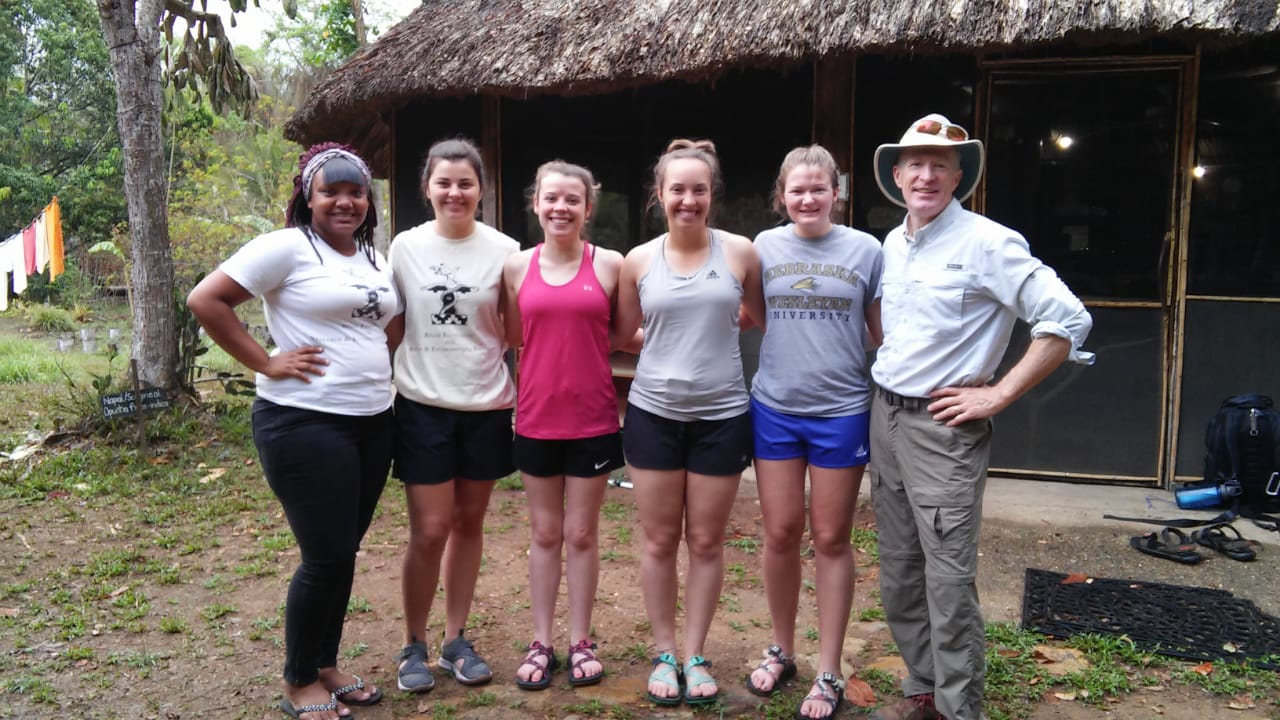
Nebraska Wesleyan University, Lincoln, Nebraska
PHOTO HIGHLIGHTS
We would love to see the photos you took during your time in Belize. Please share them via social media on Instagram @bfreebz or by email to contact@bfreebz.org.
International Herpetological Symposium 2019 in Belize
/0 Comments/in Blog, Hicatee Turtles, News, Turtle Conservation /by Tyler SanvilleNext June, the International Herpetological Symposium (IHS) will held at the Best Western Plus Belize Biltmore Plaza in Belize City. The mission of the IHS is to provide a forum for the dissemination of information and results of such research pertaining to the natural history, conservation biology, and captive management and propagation of amphibians and reptiles. Each year the IHS is held in a different location and is hosted by a Zoological, Herpetological, or Herpetocultural institution.
BFREE staff are scheduled to give several presentations and to participate in the conference which will take place from June 19-22, 2019.
The International Herpetological Symposium in partnership with the Belize Zoo and the Crocodile Research Coalition are offering scholarships for young, Belizean wildlife enthusiasts to attend. The application can be found here.
For attendees looking to explore more of Belize either before or after the Symposium, there are several opportunities. BFREE is offering a post-symposium volunteership to work alongside the critically endangered, Central American River Turtle at our Hicatee Conservation and Research Center. This immersive opportunity is from June 24 – June 28 (1-week) or June 24 – July 5 (2-weeks). Volunteers will assist in all aspects of animal care for the captive population of adult turtles, juveniles and hatchlings. Email, tsanville@bfreebz.org for more information.
Prior to the workshop, there is an exciting wildlife-focused 8-day Field Trip which includes three nights at the BFREE Field Station. Activities will include an in-depth tour of the Hicatee Conservation & Research Center and lots of hikes (both day and night) to search for cool reptiles and amphibians!
BFREE Receives Porras Conservation Award
/0 Comments/in Blog, Conservation, Education, Educator, Forum, Hicatee Turtles, Non-Proft, Research, Turtle Conservation /by Darrell Robinson
It’s not often international wildlife conferences hold their annual meeting so close to home. Fortunately, the International Herpetological Symposium (IHS) chose Belize City as the base for their 42nd gathering and we are so glad they did! The International Herpetological Symposium (IHS) provides a forum for the dissemination of information and research pertaining to the natural history, conservation biology, captive management, and propagation of amphibians and reptiles. The symposium provided a valuable opportunity to showcase the herpetological conservation taking place in Belize. BFREE Staff, Jacob Marlin, Heather Barrett, Tom Pop, and Jaren Serano, attended the conference and presented on various topics. Dr. Marisa Tellez of the Crocodile Research Coalition also provided local perspective on conservation in Belize and several student presenters from southern Belize’s Independence Junior College highlighted research questions and projects pertaining to reptiles and amphibians in the country. At the close of the conference, BFREE was given the Porras Conservation Award. This award is granted in recognition of lifelong achievements in and contributions to field biology. The award is presented to a speaker (or – in this case – an organization) who has demonstrated that their work represents exceptional accomplishments in the field that benefit herpetological conservation. We are pleased and honored to have our work recognized in this way.
BFREE PRESENTATIONS AT THE 42nd IHS SYMPOSIUM
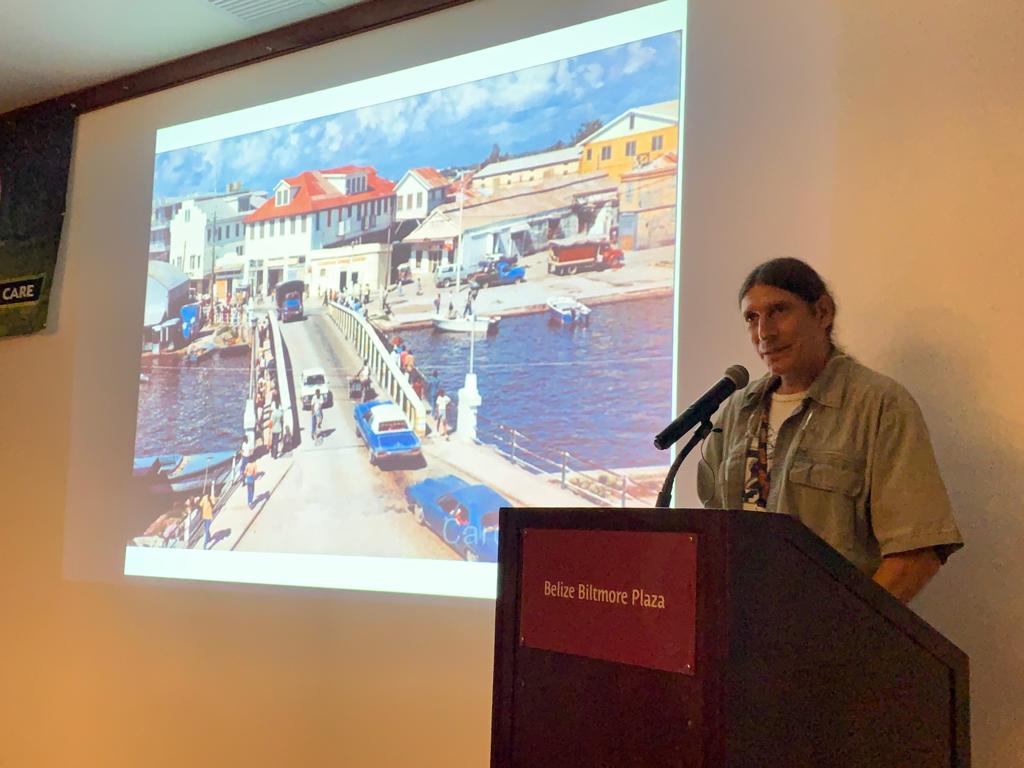
Jacob Marlin, BFREE Executive Director, provided the keynote presentation. “The Herpetofauna of Belize, 30 Years of Observations, Myths, Facts and Hot Spots”
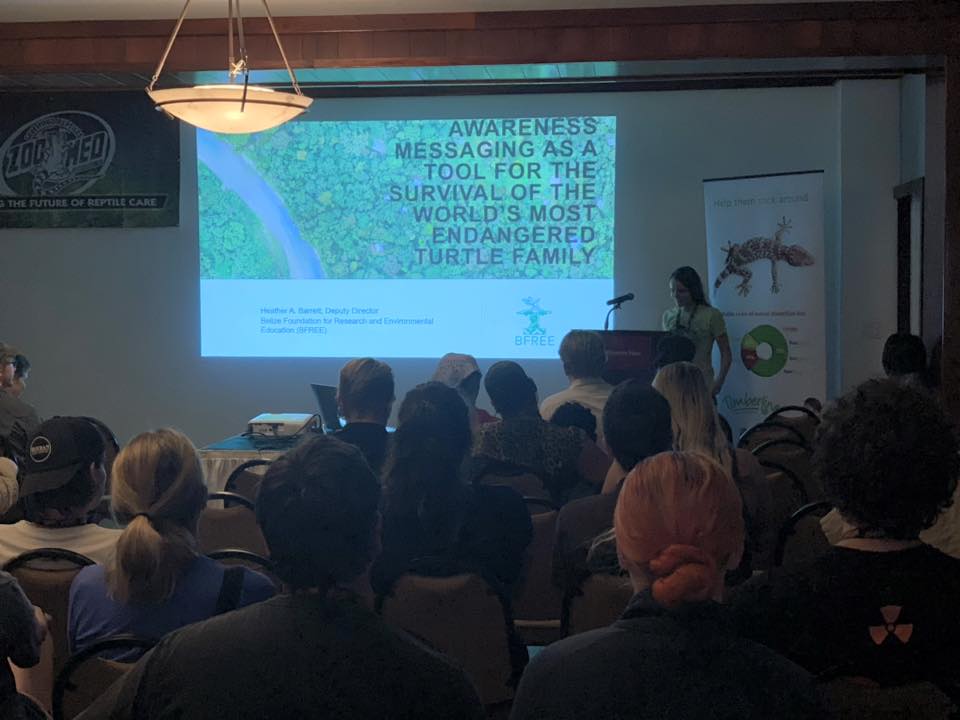
Heather Barrett, BFREE Deputy Director, presented “Awareness Messaging as a Tool for the survival of the world’s most endangered turtle family”
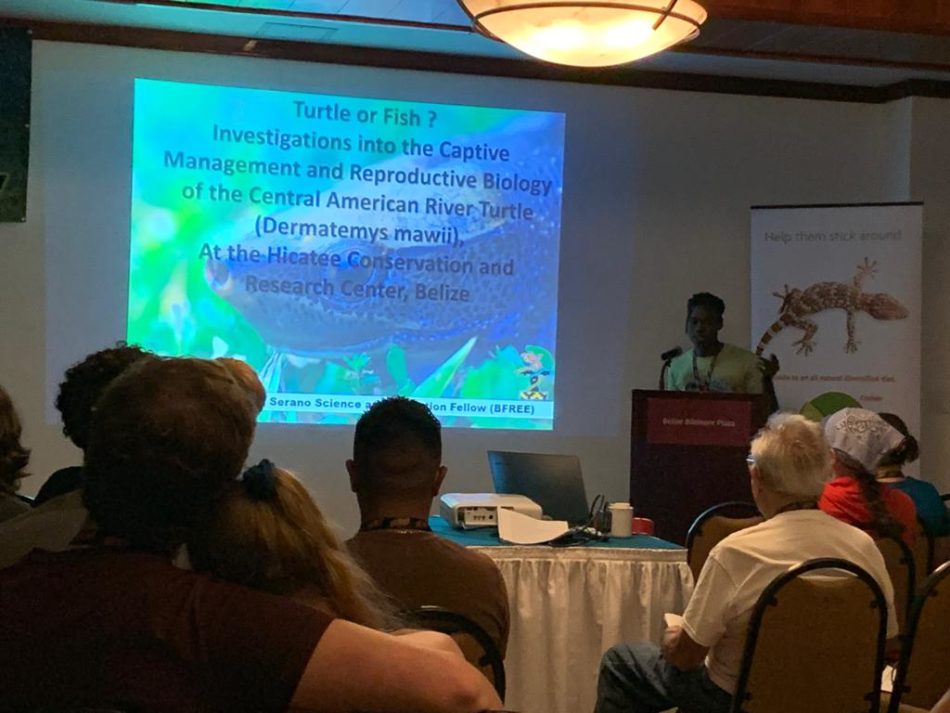
Jaren Serano, BFREE Science and Education Fellow, presented “Turtle or Fish? Investigations into captive management and reproductive biology of the Central American River Turtle (Dermatemys Mawaii), at the Hicatee Conservation and Research Center, Belize”

